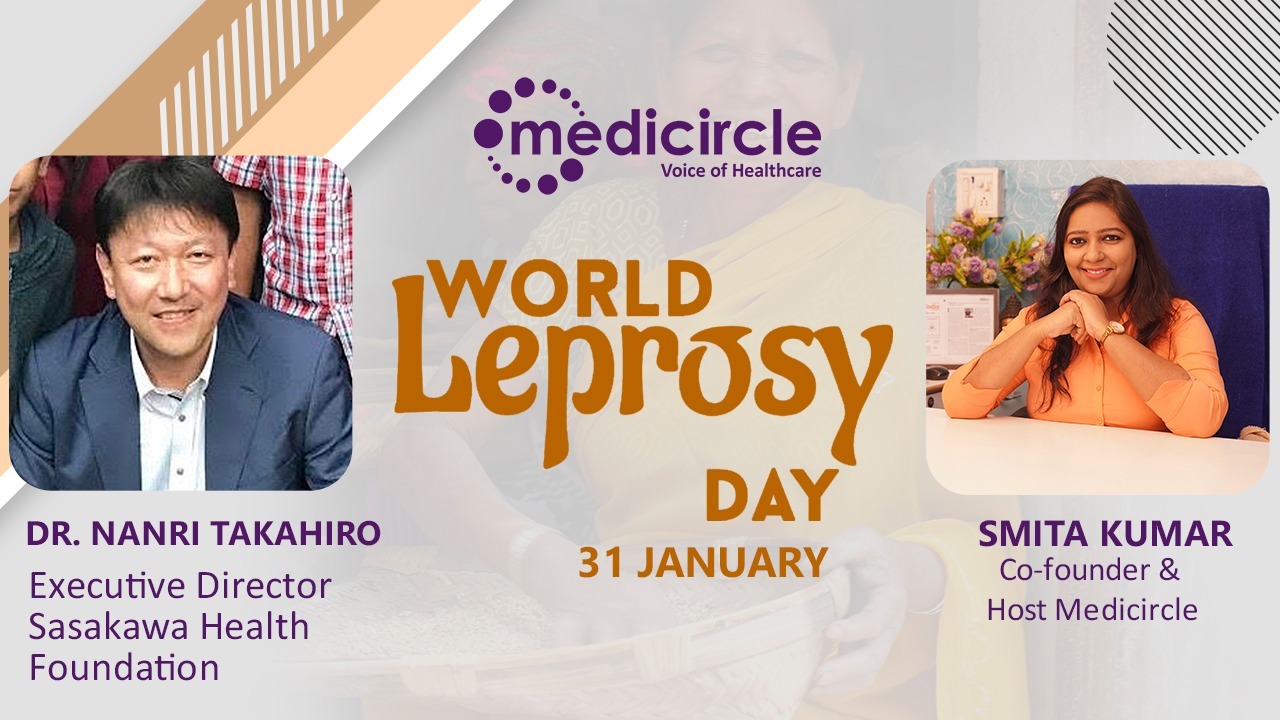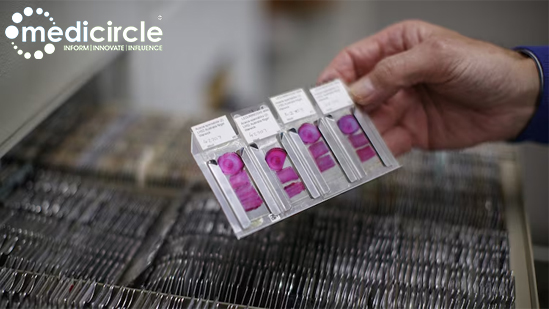Dr. Nanri Takahiro is the Executive Director, Sasakawa Health Foundation and a lecturer at Atomi University, Tokyo, Japan. His area of expertise is in community development, public participation, management of non-profit organizations, etc. He has previously served as Program Advisor and Program Director at The Nippon Foundation (Tokyo, Japan) and currently serves as a Vice-Chairperson of Global Partnership for Zero Leprosy (GPZL), Steering Committee Member of Japan Alliance on Global Neglected Tropical Diseases (JAGntd), Board Member of Japan Society of Social Design Studies, etc.
Sasakawa Health Foundation (SHF) was established in 1974 with the goal of eradicating Hansen’s disease, also known as leprosy, from the world’. Sasakawa Leprosy (Hansen’s Disease) Initiative is a strategic alliance between WHO Goodwill Ambassador for Leprosy Elimination Yohei Sasakawa, The Nippon Foundation and Sasakawa Health Foundation. It was formed in 2020, but the two foundations’ involvement in leprosy work goes back nearly 50 years.
Tackling leprosy and handling social Discrimination is important
Dr. Nanri explains, “Our approach is best described in terms of the two wheels of a motorcycle: the front wheel represents tackling leprosy as a medical disease and the back wheel represents tackling the disease’s social dimension, especially discrimination. We believe that to make progress towards a world without leprosy and the problems it causes, both these wheels have to be turning at the same time, and so that is what we focus on,’’ he says.
Political commitments of National leaders are vital
Dr. Nanri shares the roots of the Sasakawa Foundation, “Since 1975, we have been supporting countries around the world, including India, in their efforts against leprosy. We have channeled our support through the WHO, amounting to approximately US$190 million to date. Since 2001, Mr. Yohei Sasakawa, the chairman of The Nippon Foundation, has served as WHO Goodwill Ambassador for Leprosy Elimination and has gone to see leprosy programs in action and has met with presidents and prime ministers to urge them to take an active interest in leprosy. While in many countries leprosy ranks lower than other diseases in terms of their public health priorities, efforts to obtain a political commitment from national leaders are very important to ensure that the disease is not forgotten. Over the years, Mr. Sasakawa has visited more than 120 countries and traveled to India around 60 times. In recognition of his contribution to leprosy work, he was awarded the Gandhi Peace Prize for 2018 by the Government of India,’’ he says.
Leprosy recognized as a human rights issue
Dr. Nanri talks about the global contribution of Sasakawa foundation towards leprosy eradication, “Concerning leprosy’s social aspect, one of our important contributions, working in cooperation with the Government of Japan and other partners, was to lay the groundwork for the adoption in 2010 of a resolution on Elimination of discrimination against persons affected by leprosy and their family members, together with accompanying Principles and Guidelines, at the United Nations Human Rights Council and the United Nations General Assembly. With the adoption of this resolution, leprosy was recognized as a human rights issue by the international community. We are also actively engaged in the empowerment of organizations of persons affected by leprosy and support organizations in 22 countries. In India, we were involved in the establishment of the Association of People Affected by Leprosy (APAL), which represents the interest of residents of India’s 750 or so leprosy colonies and works for their socio-economic empowerment. We also work closely with our sister organization, the Sasakawa-India Leprosy Foundation, to improve the livelihoods of colony inhabitants,’’ he says.
Factors contributing to the comeback of leprosy
Dr. Nanri rules out possible reasons why Leprosy re-emerges after being declared eliminated as a public health issue, “I don’t think anyone would disagree that after India eliminated leprosy as a public health problem, attention shifted elsewhere and there was less focus on leprosy. It’s fair to say that this is not limited to India. In many countries, budgets and personnel have been trimmed, and annual new cases of the disease globally show that the number has plateaued and is only decreasing very slowly. One must also bear in mind that leprosy is still a challenging disease. It has a long incubation period, so cases may not emerge until years after someone has been infected. Also, the initial symptoms are relatively painless, so there may be little incentive to seek medical attention, especially for someone who relies on a daily wage and can’t afford time off. There is also the role of discrimination, which can preclude someone from seeking help out of fear of prejudice, should his or her condition become common knowledge. So, these factors can contribute to the disease remaining in the community. But when we look at areas where case numbers are increasing, I think we must view this as a positive sign that cases are being detected and health services are becoming more active. This may lead to a temporary increase in numbers but over the long term will contribute to an overall lowering of case numbers. And there are other numbers you need to look at too to get a more complete picture of the situation. Leprosy is a disabling disease if allowed to progress unchecked, and there is a strong connection between disability and discrimination. It’s important, therefore, to detect cases early and treat them promptly. For example, in 2019, the number of new patients with disabilities in India has decreased by nearly 50% compared to 2015. This indicates that cases are being detected earlier, and this is a very positive sign. I think you need to keep these figures in mind too when considering the situation in India,’’ he says.
Measures required to dispel the stigma
Dr. Nanri speaks about the measures required to dispel the stigma associated with leprosy, it comes down to changing people’s mindsets which is going to take some time, “There are two things that are necessary to stamp out the stigma.
The abolition of all laws that discriminate on the grounds of leprosy
First, we need the abolition of all laws that discriminate on the grounds of leprosy. According to a study by an international NGO, there are currently 139 such discriminatory laws in 24 countries; of these laws, 108 are in India, including laws at the sub-national level. So, we first need to repeal all these discriminatory laws. In India, NGOs and organizations of persons affected by leprosy have been taking the lead in pushing for the enactment of the EDPAL Bill (Elimination of discrimination against persons affected by leprosy Bill). This aims at comprehensively addressing discrimination associated with leprosy and improving the livelihoods of persons affected by the disease. If enacted, the bill can be a model for the whole world.
Ensuring correct implementation of Principles and Guidelines
Secondly, the Principles and Guidelines for the elimination of discrimination against persons affected by leprosy and their family members that I mentioned earlier need to be properly implemented in each country. Although all members of the United Nations agreed to adopt the Principles and Guidelines, they are not legally enforceable, thus it cannot be said we currently have a situation where they are being properly implemented. In order to achieve this, it would be desirable to investigate the actual situation of discrimination in each country, to collect success stories summarizing the more progressive approaches that have been made to end discrimination, and to develop indicators that visualize the actual state of discrimination, as in the case of HIV, so that in future countries can conduct regular investigations into leprosy and discrimination based on these indicators," he says.
Need for Vaccine Development
Dr. Nanri concludes by sharing his views on the need for vaccine development for leprosy, “As far as I’m aware, vaccines are still under development. I’ve heard that vaccine trials have taken place in a number of Indian states, but as far as I know, the effectiveness of the vaccine in question has still to be validated. But vaccine development is certainly something we need to pay close attention to going forward because in addition to multidrug therapy (MDT)—the standard treatment for leprosy— preventive medicine and especially a vaccine will be necessary to interrupt transmission and totally eliminate the disease,’’ he says
(Edited by Faryal Siddiqui)

 ’’One must also bear in mind that leprosy is still a challenging disease. It has a long incubation period, so cases may not emerge until years after someone has been infected,’’ says Dr. Nanri Takahiro, Executive Director, Sasakawa Health Foundation.
’’One must also bear in mind that leprosy is still a challenging disease. It has a long incubation period, so cases may not emerge until years after someone has been infected,’’ says Dr. Nanri Takahiro, Executive Director, Sasakawa Health Foundation.














.jpg)












_elected_as_global_president_of_the_world_congress_of_ophthalmic_anaesthesia.jpg)






